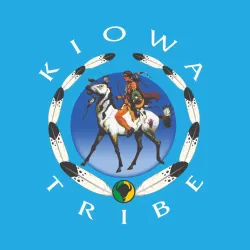Opioid overdose is a growing problem in the United States that is affecting Indian Country. The current opioid-related overdose death rate is 13.7 deaths per 100,000 exceeding the national rate of 13.1 per 100,000 (https://tribalepicenters.org/wp-content/uploads/2018/03/AASTEC-opioids-fact-sheet.pdf). Hundreds of the federally recognized Tribes of the US filed lawsuits, claiming that the manufacturers, distributers, and retailers knew that the Opioids were more addictive than stated. After a long and lengthy litigation that begin in 2017; Judge Dan A. Polster has ruled in the Tribes favor, reaching an agreement with the Tribal Leadership Committee (TLC) to settle negotiations.
The defendants include Purdue Pharma (the manufacturer of OxyContin) and Mallinckrodt PLC (one of the largest manufacturers of generic opioids), both entered bankruptcy as a result of the litigation. The pharmacies and Teva/Allergan also reached an agreement with the TLC on terms for proposed settlements open to all of the federally recognized Tribes whether or not they filed a lawsuit. Those settlements include three of the largest pharmacies: Walmart, CVS, and Walgreens (pharmacies), several manufacturers, Jassen, Teva, and Allergan; and three pharmaceutical distributors: McKesson, Cardinal Health, and the Amerisource Bergen.
The Tribal Opioid Settlements established the Tribal Abatement Fund Trusts; consisted of the money collected from the thousands of lawsuits that were filed by the Tribes, tribal health organizations, states, cities, counties, hospitals, union trust funds, and individuals against the manufacturers and companies involved in the selling of opioids in the US.
Recently, the Kiowa Alcohol and Drug Abuse Program (KADAP) received payment, $1,809,499.57, from the Tribal Abatement Fund Trust. Charles Nestell, Director of KADAP, explained plans for a facility and possible ‘Healing Center’ to offer treatment and other potential programs that work in and around addiction and mental health. Other potential plans for the funds includes the following outline: A. Treat Opioid Use Disorder, B. Support People in Treatment & Recovery, C. Connection People Who Need Help To The Help They Need (Connections to Care), D. Address The Needs Of Criminal Justice Involved Persons, C. Address The Needs Of Pregnant or Parenting Women & Their Families, Including Babies with Neonatal Abstinence Syndrome, E. Prevent Over Prescribing & Ensure Appropriate Prescribing & Dispensing of Opioids, F. Prevent Misuse of Opioids, G. Prevent Overdose Deaths & Other Harms (Harm Reduction), H. First Responders, Leadership, Planning & Coordination, I. Training, and J. Research.
Each of the 574 federally recognized Tribes in the US has its own cultures, history, and traditional practices. Therefore, each Tribe is best suited to determine the most effective abatement strategies for the specific community it serves. Nestell stated that the KADAP program will be planning more community outreach that includes Talking Circles, AA Meetings, and other scheduled events in the near future


